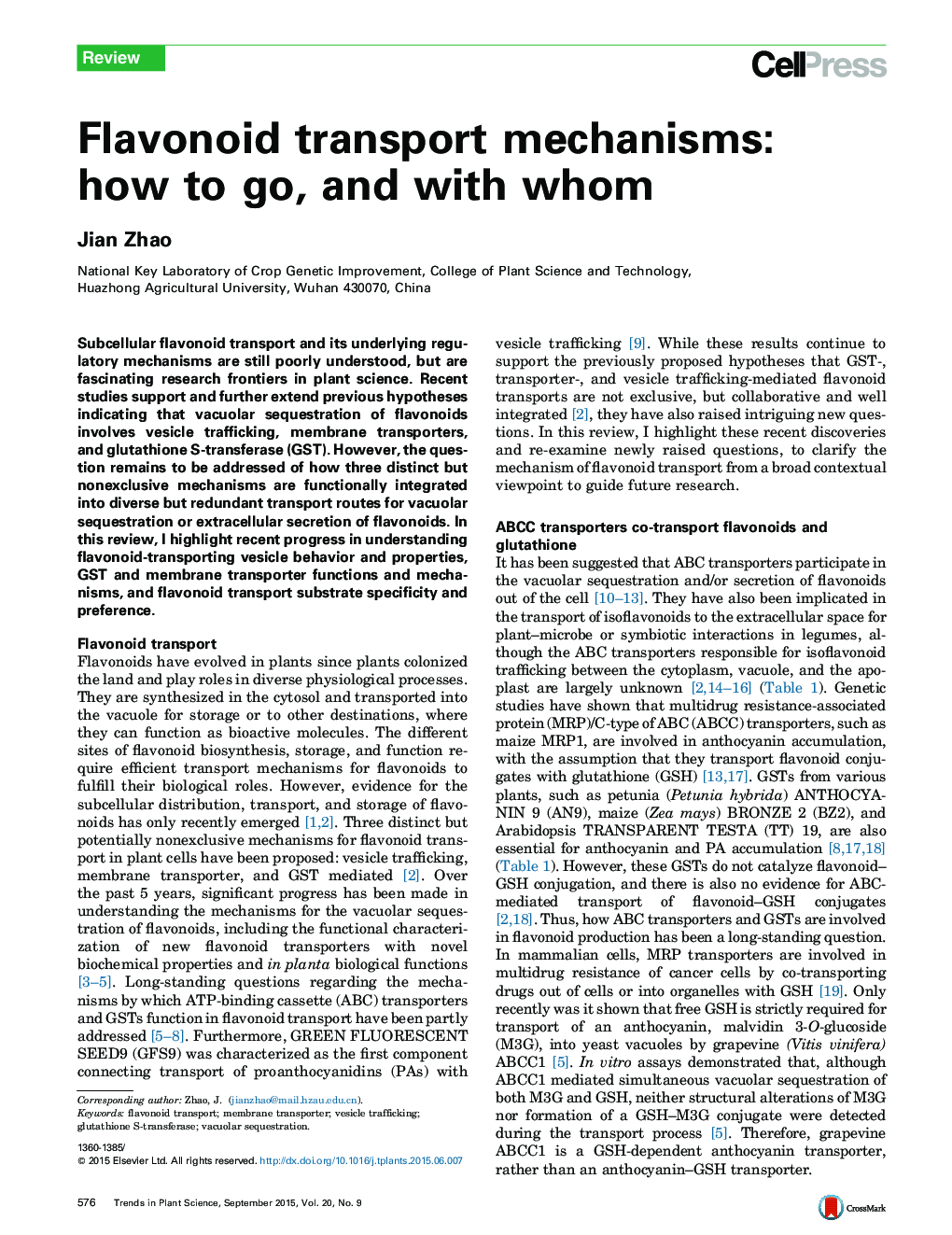| Article ID | Journal | Published Year | Pages | File Type |
|---|---|---|---|---|
| 2825864 | Trends in Plant Science | 2015 | 10 Pages |
•Vacuolar sequestration of flavonoids involves collaboration of vesicle trafficking, transporters, and GSTs.•Vacuolar ABCC1 can co-transport anthocyanins and GSH, without conjugation, into the vacuole.•Transporter substrate preference and GST binding affinity to different flavonoids may define the specificity of flavonoid transport.•The coupling and integration of vesicle trafficking, membrane transporters, and GSTs provide flexible routes for vacuolar sequestration of flavonoids.
Subcellular flavonoid transport and its underlying regulatory mechanisms are still poorly understood, but are fascinating research frontiers in plant science. Recent studies support and further extend previous hypotheses indicating that vacuolar sequestration of flavonoids involves vesicle trafficking, membrane transporters, and glutathione S-transferase (GST). However, the question remains to be addressed of how three distinct but nonexclusive mechanisms are functionally integrated into diverse but redundant transport routes for vacuolar sequestration or extracellular secretion of flavonoids. In this review, I highlight recent progress in understanding flavonoid-transporting vesicle behavior and properties, GST and membrane transporter functions and mechanisms, and flavonoid transport substrate specificity and preference.
